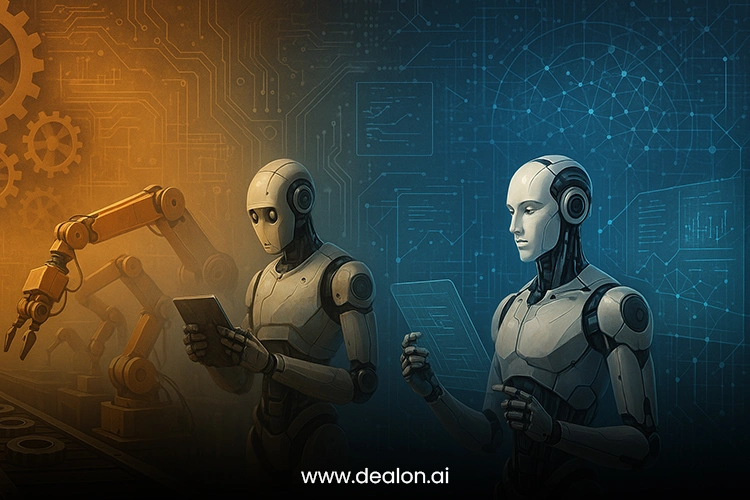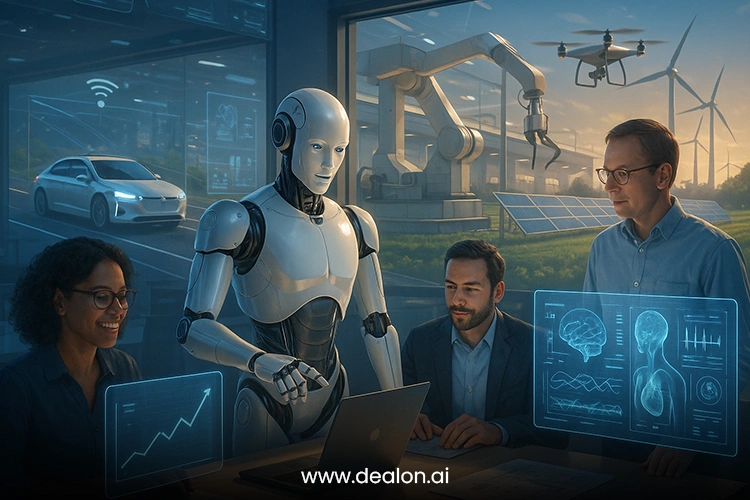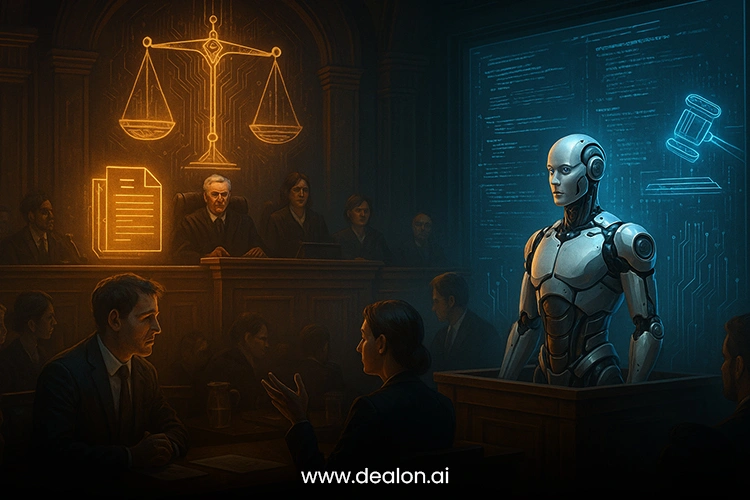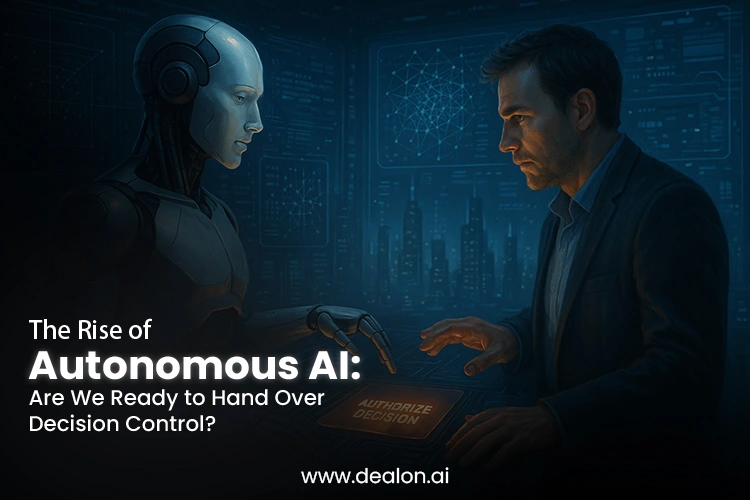Autonomous AI is quickly becoming one of the most impactful new technologies of the twenty-first century. As a technology that is anticipated to revolutionize entire sectors of the economy and shift the nature of human-machine interaction, autonomous AIs are currently no further in the realm of speculative science fiction than self-driving cars or automated AI system decision makers in healthcare.
These systems are built to function in a standalone mode and to make decisions without needing any human operator, and they raise important issues of control and advancement. As much as the advancement of AI evokes a sense of security, clutching the reins of the technology can be daunting. AI systems are built to make a decision without needing a human to intervene, and therefore, the question presents itself whether it is to hand a decision to a machine.
Autonomous systems, when applied to various sectors, have the chance to improve productivity and drive new waves of innovation in these industries, all while improving the efficiency of the entire system. These systems are a promise of unmatched possibilities, whether in the automated processes of the manufacturing industry, an intelligent, automated facility grid, AI-tailored healthcare, or precision agriculture. These new possibilities come with new systems and thus shift to the economy.
Who gets blamed if AI errs or inflicts damage? How do we ensure such systems do not drift too far from ethics and social constructs? With each advance in these systems, and as they become more adept at functions once thought exclusive to human mental capabilities, these questions deepen. As we enter the period of autonomous AI, we need not only to attend to the technological progress but also to the social and ethical issues that arise.
For every revolutionary promise the advancement of AI brings, there is an equally revolutionary risk. This blog centers on the development of autonomous AI, its risks and potentials, in an effort to determine whether society is fully prepared to embrace the autonomy of machines in a manner that is beneficial to humanity.
Also Read: Beyond the Carbon Footprint: The Hidden Environmental Cost of AI
The Evolution of Autonomous AI: From Automation to Autonomy

AI Autonomous is one of the advanced aspects of AI technology when compared to other automation systems. Automation is when computers and machines do repetitive tasks as instructed by a person. Constitutively different and finer than the other mentioned systems, autonomous AI has the systems to make its own choices and act without any human help. It is capable of learning, changing to different environments, making its own choices, and using predictive and real-time data. Doing away with machines to perform rigid functions is one step to embracing the adaptive and flexible autonomous behavior in systems, a behavior that is a dire necessity in today’s business world.
One of the most common self-driving AI is autonomous vehicles, which showcase AI paired with other advanced self-monitoring systems such as LIDAR, cameras, and radars. Autonomous systems make use of AI and machine learning to perform self-navigation without requiring anywhere close to full human assistance. A self-driving car, for example, has the capacity to decide the speed it’s going to travel at, the route it is going to take, and the level of safety it is going to observe.
This is accomplished by interpreting the environment and making rapid decisions regardless of the sudden shifts in the weather or traffic. Autonomous vehicles, even in the testing phases, give an insight into the infinite capabilities of AI systems.
AI technology has opportunities beyond just self-driving cars. In the medical field, doctors can use AI-powered systems to help diagnose diseases by scanning and analyzing complicated medical files. These systems recognize patterns and anomalies in the image data and lab results, which can help in early and precise diagnosis. AI assistants in hospitals handle appointment scheduling, student registration, and tailor treatment plans, which allows doctors to spend their time on other essential tasks.
In the logistics industry, AI algorithms improve the management of supply chains by routing deliveries, forecasting demand, and controlling inventory levels all at the same time. Blending the use of drones and autonomous trucks for delivery eliminates the costs and issues associated with traditional road-based transportation. AI systems are nimble and can easily adapt to working in environments that are messy, chaotic, and unpredictable, like big cities and rural areas, which might baffle humans.
Benefits of Autonomous AI: Efficiencies, Innovations, and Improvements

As with every form of AI, autonomous AI also comes with a list of unique and valuable benefits that stand to change productivity, boost operational efficiency, and even social outcomes. Autonomy AI deficiency of time is an example of the primary benefits. Repeating a particular task is often time-consuming and routine, and to humans, it will take an absurdly long time to complete.
Multiplying human effort is one thing, but surpassing the best time and accuracy a human can do is another, and with autonomous AI, systems can do exactly that. In the blink of an eye, several hours or even days of work can ultimately lower the resources needed to complete a task, without reducing the output predicted. Another aspect of autonomous AI is the diminishment of human error, which is a significant problem in every industry, but is crucial to decision-making in businesses, finance, and even health.
The change that autonomous AI makes to the world of precision is one of its most defining implications. In the field of healthcare, for example, AI systems are capable of precision depth analyses of a patient’s medical data, which assists doctors in early diagnosis of a disease and ideal treatment suggestions. AI-assisted analysis of medical images can analyze and differentiate even the most minute details in a scan, such as a tumor, which human doctors may never notice.
In farming, autonomous AI can evaluate soil, detect a disease or pest, and predict the optimum time for harvesting, all in real time and totally unattended. This unparalleled precision decreases the waste, optimizes the resource use, bolsters the quality and quantity of the crop, and thus improves the sustainability of farming.
Autonomous AI has also harnessed the power of innovation. By relieving people of mundane and dangerous work, AI permits them to concentrate on more strategic and innovative activities. The productivity gains brought about by autonomous systems may spur new industries, products, and services. The self-service AI kiosks at retail shops, for instance, have changed the shopping experience by offering greater convenience and less human cashier interaction. In manufacturing, autonomous robots are being used more and more to assemble products, leading to unprecedented innovations in design and production.
In addition, autonomous AI has the potential to bring about novel advancements in environmental sustainability. Autonomous AI can increase the accuracy of the management of energy in the systems of buildings, the routing of renewables, and the lower-order wastes of renewable energy systems. In the case of climate change, AI’s ability to analyze and optimize large complex systems can reduce the environmental footprint of energy, transportation, and agriculture.
Industries have already started to leverage Autonomous AI to improve their systems by optimizing workflows and enhancing value creation. The scope of utilization and value creation of Autonomous AI only gets bigger and breeds more innovation with time. Optimizing and streamlining critical tasks with no human supervision opens new frontiers of industry operation and societal integration. The new age of technological improvements that focuses on efficacy and sustainable growth will be driven by Autonomous AI.
Ethical Concerns: Who is Responsible When Machines Make Mistakes?

The streamlined development of Autonomous AI systems brings with it its own set of ethical and moral conundrums. Unlike other ethical concerns, the primary question of this domain revolves around the ethical boundaries of the levers of autonomy, responsibility, and decision-making. When an Autonomous AI system has a lapse in functioning, such failures are often attributed to the AI system’s blind spots, malfunctions, or the design faults of the developers responsible for the decision-making processes and the accountability for failures. This is especially critical to ponder in industries that deploy autonomous vehicle systems. Mistakes at their level could cause accidents and other life-altering consequences.
Picture this scenario: a self-driving car gets into an accident. Who do you think is liable? Is it the manufacturer of the car, the developer of the car’s software, or is it the AI that is directly responsible for the decision-making in the event of the accident? It gets worse. Self-driving cars work using learning algorithms, making their thought processes harder to track. What if a self-driving car gets into an accident because of an error in the car’s self-learning algorithm? Where do you even start in identifying the responsibility for the decision made? Is it the people who built the machine learning models? Or is it the responsibility of many decision-makers, including the developers and manufacturers?
More complicated than the situation already is, there is also the factor of AI systems that increases this ambiguity a thousandfold. Many AI systems now in use are described as “black boxes”. This term denotes that even the people who are supposed to use these systems do not know the real reason the AI has come to a given decision. The more straightforward the system’s reasoning, the more complex the underlying processes that people are expected to monitor and understand. When an AI system makes a decision, how can anyone hold it accountable for a decision that can’t even be fully explained?
The troubling notion that an artificial intelligence system can take an action that may end up being wrong, and the system not being able to explain itself, is the core example of the missing link of explainability that such an autonomous system relies on. While such notions are ardently being carried out, social justice and ethical stability of such a system are simply out of the equation, especially when the concern is autonomous machines that can make decisions and take actions related to the very existence of humans. The lack of decision accountability poses significant ethical dilemmas.
AI systems are not just autonomous; they can also be used in an unethical manner. Take the example where AI can be used to replace an existing workforce. Everything from complex decision-making in various systems to customer service can be managed through an AI system. It will, slowly and unpleasantly, replace several human workers who are bound to become machine-dominated.
It will also replace a number of transport, retail, and manufacturing industry jobs, further increasing social disparity and inequality. Despite the claims that AI will generate new industries and job opportunities, workers in such domains will be the first casualties of the decision to implement autonomous AI. The effect will be disastrous, primarily due to the use of automation and AI systems that are able to perform tasks at a lower cost than humans.
Most people can shift over to working with AI, but this form of retraining doesn’t come easily. People are already understudying various AI systems, but the fast pace of technological advancement tends to outpace the educational training apparatus. Thus, it is necessary that governments, corporations, and even educational facilities come together to help the worker with proper upskilling and reskilling so that people do not suffer from the advancement and integration of autonomous systems into the workplace. The decision to retrain workers must be part of a comprehensive social responsibility framework, ensuring that no worker is left behind due to automation’s increasing role in society.
There is much worry about the deployment of AI systems, how they should be used, what ethical implications they may carry, and what responsibilities may arise from their operations. This is an essential section of the enigma and needs independent, transparent, and precise policies on the deployment of any self-governing AI systems. There must be a partnership between the governments, firms, and AI developers, setting the rules and regulations on self-governing AI systems for safety, transparency, and responsibility. There must be some ethical standards framed that will allow AI systems to not only be the most effective in decision-making but also operate within the parameters of human rights, fairness, and embrace the social good.
For instance, an AI should be created to operate autonomously, not only ethically but also to self-govern its decisions, so that it can illuminate its rules and provide justification for its autonomy. This could ease the bias and fairness concerns of AI systems that discriminate against some populations and not others. Also, there must be what is called “man-in-the-loop” features, so that under certain conditions, apart from the decisions that these systems will independently make, there will be the ability for human intervention in critical cases where AI decision-making can have life-altering consequences.
In addition, the discussion of AI and job loss can’t just center on retraining. Policymakers also need to shift to thinking about universal basic income or other forms of social protection while the transformations are made. Yes, there are new possibilities that AI will unlock; however, the most exposed groups in the labor market need to be given a floor of protection to work with. The decision to implement safeguards must accompany the advancements in AI technology.
Conclusion
Even though the growth of autonomous AI capable of operating without human intervention comes with great potential to transform industries and increase productivity, it comes with equally significant ethical and social challenges. Empirical systems must make decisions and rely on transparency, accountability, and fairness while making such decisions. Society also needs to be ready for the disruptions that AI will bring, such as the loss of employment and the change in human position. Public dialogue, ethical innovations, and the social integration of responsible AI will guarantee the accomplishment of the goals. The clearer the guidelines, the less the inequality and the more the innovation.

